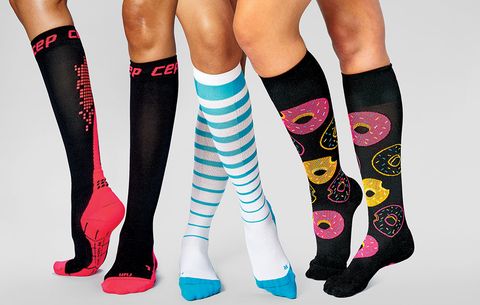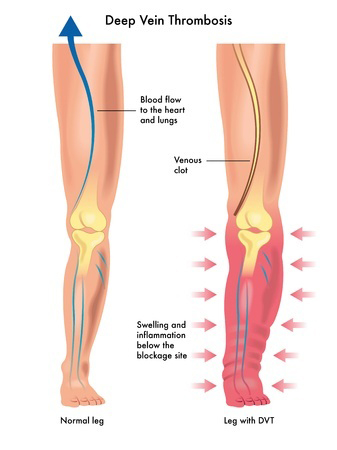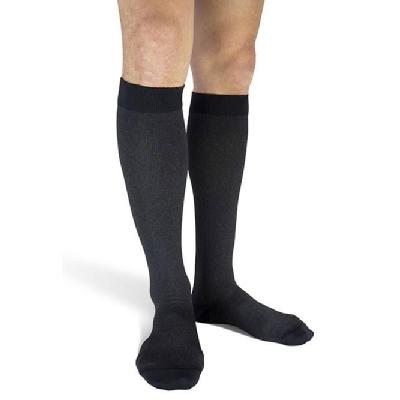Have you heard about how wearing compression socks can improve one’s health and wellness? Have you been thinking about trying them out yourself but you’re not sure exactly what they are and what they do? Well, you’ve come to the right place! We’ll tell you what you need to know to get started on your journey toward health and wellness aided by compression socks.
Using compression therapy for medical treatments is not new! The concept has been in existence for a while. In fact, it dates back to the time when the Roman soldiers would wrap their legs using leather straps to help improve blood circulation, especially for long marches. Today, as you can imagine, they are much more functional they are used for various medical and health reasons as they help support and prevent various conditions.

Modern compression socks have more sophisticated designs that are intended for a variety of reasons. Not only that, but they’re also better to look at! More people from different walks of life are wearing compression socks to help prevent the risk of blood clots forming in their legs as well as for varicose veins, swelling, fatigue, athletic performance, and other issues. People who use compression stockings include flight attendants, nurses, pilots, athletes, pregnant women, and those recovering from surgery.
Compression Socks and Circulation

Understanding how compression socks work requires that we first learn a little about how blood circulates in your legs. Scientifically speaking, the one-way vascular system is how the body transports blood to the rest of the body, including your legs–this process is what is known as circulation. So, getting good medical help either from the clinic or pharmacy on how to use these stockings is important and will help prevent any unforeseen challenges that can pose a threat to your health.
The importance of blood circulation can’t be overemphasized because it is a healthy and natural process that allows your body to function properly. Circulation of blood to your legs and feet provide a constant supply of nutrients and oxygen to all the cells. Another critical aspect of this system is that it provides the removal of waste from different parts of the body to maintain a healthy system.
The restriction of blood flow to certain parts of the body is harmful and can lead to severe health conditions. Focusing specifically on the legs, poor circulation can cause the stiffening of the blood vessels, which can be very painful.
The following are symptoms associated with poor blood circulation in your legs:
Numbness and Tingling Sensation
This is one of the most common signs to watch out for, which indicates your legs are not receiving enough oxygen and nutrients. When blood is unable to reach parts of the legs in the required quantities, then you might also feel like being poked with pins and needles.
Swelling
Sometimes fluid accumulates in the legs of patients, a condition common in pregnant women. This condition usually becomes worse as the expectant woman gets closer to her due date. If nothing is done to ease the situation, then the condition can be very uncomfortable for anyone who has fluid pooling in their ankles and feet.
Leg Ulcers
Leg ulcers are quite noticeable, and as the name suggests, these are open wounds that appear in different parts of the leg. They develop when blood accumulates in the veins of the legs hence causing swelling under the skin.
Varicose Veins
Restricted blood flow results in the visibility of varicose veins just as in deep vein thrombosis. These veins make it difficult for blood to go back to the heart for purification. Varicose veins can cause other symptoms as well, such as itchiness, pain in the legs, veins that seem knotted, and leg heaviness. It is important to note that varicose veins are prevalent among individuals who stand for long hours at a time without proper support.
Blood Clots
The existence of a clot in the blood vessel is a severe medical condition that, if left untreated, can be fatal. A clot prevents blood from flowing adequately to other organs. Apart from the pain caused by a blood clot, if it travels from the legs to other vital organs, you can develop an embolism in the arteries, a heart attack or a stroke.
What Do Compression Socks Do?
The blood in your veins has to go against gravity by flowing back to the heart, where it is replenished with oxygen and nutrients. Anything that restricts the flow of blood, such as week wall linings of blood vessels, injury, or lack movement, causes the blood to pool which can lead to several symptoms mentioned above.

Compression stockings are helpful in relieving the symptoms associated with restricted blood circulation. They help squeeze the wall of the veins and the leg tissues to push up blood in the veins to go to the heart. They also help with the flow of the lymph fluid, which provides moisture content to the cells found in the legs. This helps with the pooling of the fluid, especially for pregnant women, as it reduces the swelling of the tissues.
High-quality compression socks provide general healthy living comfort even for wearers who don’t have medical conditions. These socks are simply worn to reduce stress on the feet when working out or traveling. This means that anyone can wear them as they go about their busy day!
Are Compression Stockings for Everyone?
Generally, compression socks are safe as they have numerous benefits such as enabling one to healthy living if worn correctly. Knee-high stockings of 20 mmHg -30 mmHg are among the various types of compression socks popular among users.
There are, however, some groups of people who shouldn’t use compression socks or stockings. This includes people with peripheral neuropathy or conditions that affect skin sensations or fragile skin. It is advised that you consult your healthcare practitioner if you have a medical condition. You will be informed of the best compression stockings to get that suit your situation.
What’s so Special About 20-30mmHg Compression Socks?
Compression socks are measured by millimeters of Mercury or mmHg. They may range from as low as 8mmHg to as high as 50mmHg. The most commonly used level, however is 20-30mmHg.
This level of compression stockings is the most commonly prescribed by doctors as they provide moderate compression while treating different conditions. They are also known as medical grade compression or class I.

Compression socks of this range moderately firm and offer a number of benefits such as the prevention of varicose veins and spider veins. They can prevent and relieve venous problems, as well as swelling among expectant women. Other severe conditions prevented by 20 mmHg – 30 mmHg stockings include deep vein thrombosis, superficial thrombophlebitis, and formation of blood clots.
Other commonly used types of compression levels available include:
- 8 mmHg – 15 mmHg
- 15 mmHg – 20 mmHg
- 30 mmHg – 40 mmHg
- 40 mmHg – 50 mmHg
How to Wear Compression Socks
The right way to wear your compression socks begins with finding the right size. You can do that by measuring your ankle, followed by the largest part of your calf and then the length of your legs. You can then place your measurements beside the manufacturer’s chart to decide on the most suitable size.
Compression socks are designed to be tight, which is why they are sometimes a bit difficult to put on. You should always ensure that your legs are dry and clean before putting on the socks. This means that you should wait for any ointments to dry first before wearing them.
It is important to note that compression therapy socks should be put on in the morning before swelling in the legs occurs and then preferably removed at night. When shopping for the best compression socks in the market, it is best to have accurate measurements of your legs first to prevent buying products that are either too large or too small –making them ineffective.
Wearing your compression hose involves the following steps:
- Hold the compression stocking, then turn the upper section inside out and place your foot inside.
- Once the toe is in the sock, slowly slide the sock over your leg until it reaches the knee.
- Gently sliding the sock up your leg prevents tears and overstretching.
- If you experience difficulty sliding the stocking up your leg then rubber gloves can be handy. The gloves help by creating resistance, which makes it easier to put on the socks.
- Once you are done for the day, then you can gently remove the hose by folding it gently downwards until you reach the ankle.
You can use your thumb to remove the stocking from your heel.
Tips for Wearing Compression Socks
Taking proper care of your socks ensures that they remain effective over a long period. It is recommended that you wash your new pair of socks before wearing them. This makes the fabric more elastic hence easier to put on. Also wash your socks after each use. You can hand wash them in cool water and then allow them to dry. Taking proper care of your socks will enable you to get the most out of them.
Wear your compression stockings as you begin the day. When you wake up, your legs are usually less swollen, meaning that wearing the socks will be easier. Kickstart your day on a high note by preparing your legs to take on the day.
Enjoy the day with your stocking on the entire time as you go about your activities. It will help with proper blood flow all day long.
You can remove the socks as you retire to bed unless your doctor instructs otherwise. Note also that you should remove the socks before jumping into the shower.
Replace your compression socks regularly. Wearing them often can place pressure on them and they will wear out over a period of time. To ensure that your socks are working effectively, you should replace them every 3 to 6 months. Also, replace them if you notice any holes or if it is overstretched.
Now that you know what compression socks are and what they do, you can dive into the world of wearing them yourself! You’ll find them to be effective for all sorts of health issues, as well as for athletic performance. Get started ordering your compression socks today from Comprogear.com, and we’ll guarantee your satisfaction with our 100% satisfaction policy. It’s a win-win situation!
This page last updated January 7, 2022
